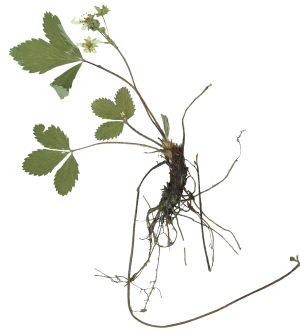In this study, I compared two populations of the freshwater gastropod <em>Campeloma sp.</em>, one from before and from after the K-Pg boundary at Hell Creek, Montana. I used principal components analysis (PCA) of 6 manually measured and 10 landmark-based components of shell morphological variation to compare the two populations, in order to investigate any possible anatomical differences that may have arisen in response to the extinction event. Likewise, I used stable oxygen isotope analysis to investigate potential differences in ontogeny or growth rate. Taken together, the stable isotope and morphometric analyses suggest that <em>Campeloma sp. </em>exhibited no major ontogenetic or anatomical differences in response to the events that triggered the K-Pg extinction. This suggests that <em>Campeloma </em>was capable of withstanding dramatic environmental change with little to no adaptation in shell morphology.
In this study, I compared two populations of the freshwater gastropod <em>Campeloma sp.</em>, one from before and from after the K-Pg boundary at Hell Creek, Montana. I used principal components analysis (PCA) of 6 manually measured and 10 landmark-based components of shell morphological variation to compare the two populations, in order to investigate any possible anatomical differences that may have arisen in response to the extinction event. Likewise, I used stable oxygen isotope analysis to investigate potential differences in ontogeny or growth rate. Taken together, the stable isotope and morphometric analyses suggest that <em>Campeloma sp. </em>exhibited no major ontogenetic or anatomical differences in response to the events that triggered the K-Pg extinction. This suggests that <em>Campeloma </em>was capable of withstanding dramatic environmental change with little to no adaptation in shell morphology.
Browse Our Collections
Available collections
Digital Collections

Here you will find digitized archival collections, oral histories, and more. We are continually expanding the collections and improving access. You may find additional digital resources that reside outside the digital library here, and a selection of Online Exhibitions here.
Collections Overview
Finding Aids
The Archives & Special Collections Library is part of the Vassar College Libraries system. It holds the rare book, manuscript, and archival collections of the college. It collects, preserves, and makes available rare and unique collections, and also engages in teaching and outreach activities. This collection of finding aids describe items in both the Virginia B. Smith Memorial Manuscript Collection and the College Archives.
Herbarium

The Vassar College herbarium holds over 8,000 specimens of vascular plants, bryophytes, and algae. Holdings are primarily from northeastern North America, and include collections made by several notable 19th century botanists. To learn more about this project visit the website here.
Vassar Scholarship
Vassar College's institutional repository reflects the research and scholarly output of the Vassar College community. It provides access to senior theses, peer reviewed open access articles, and projects from a wide range of disciplines.